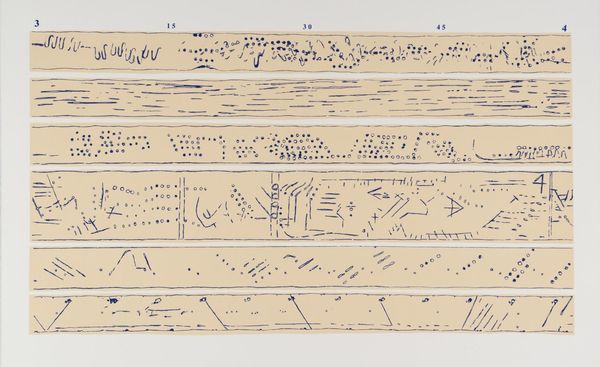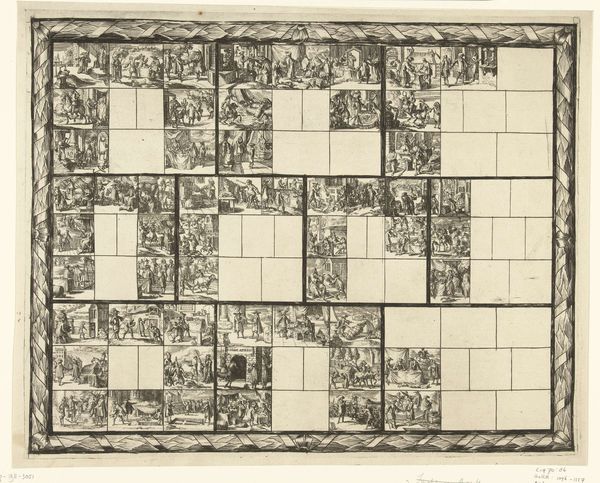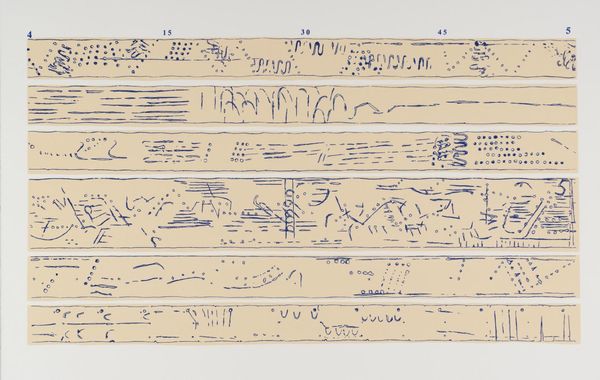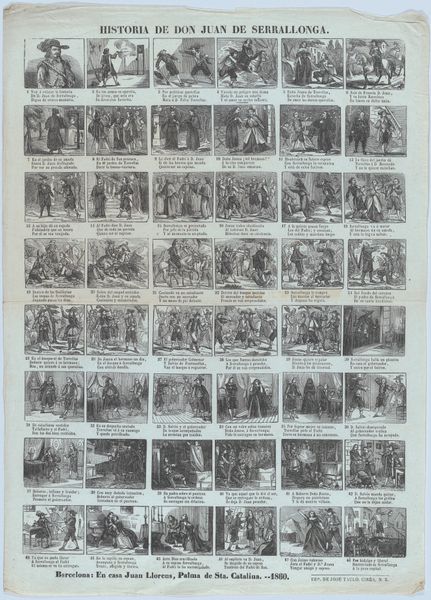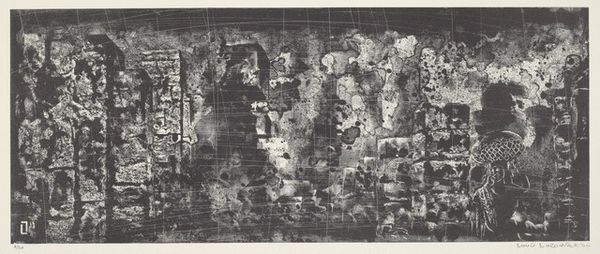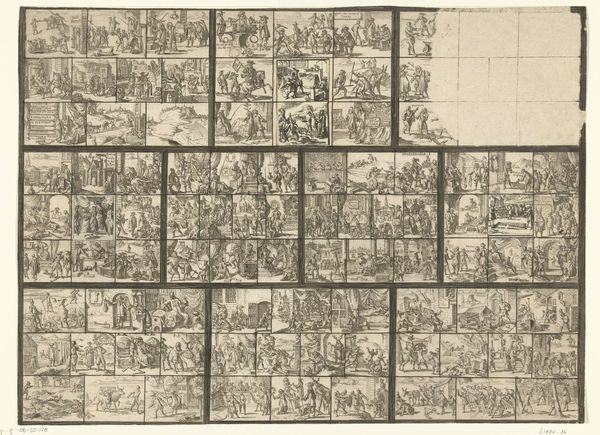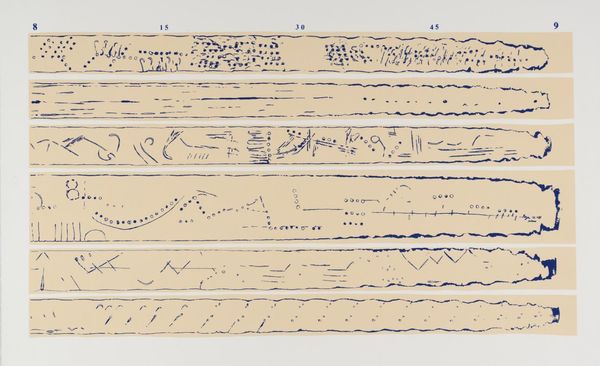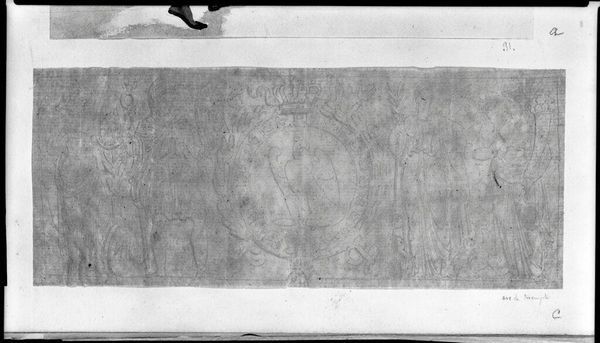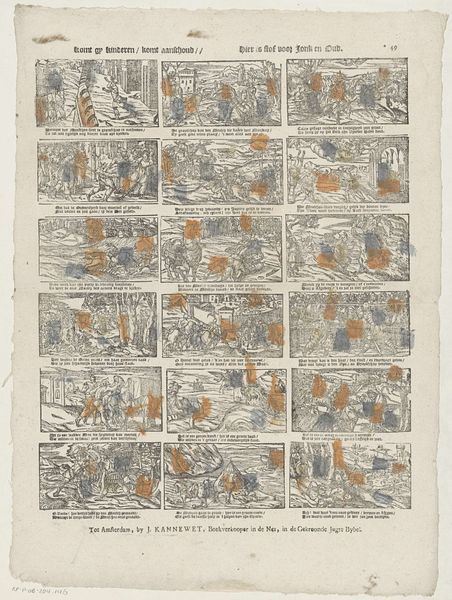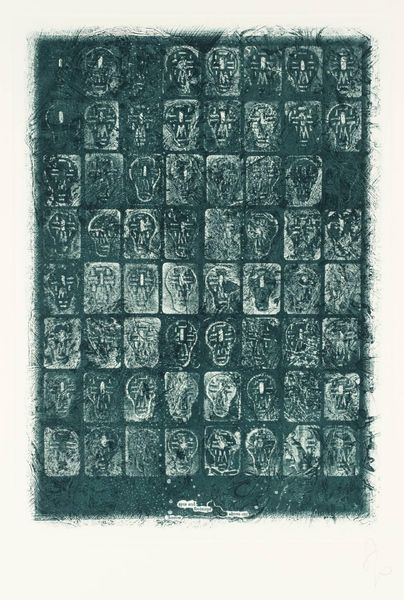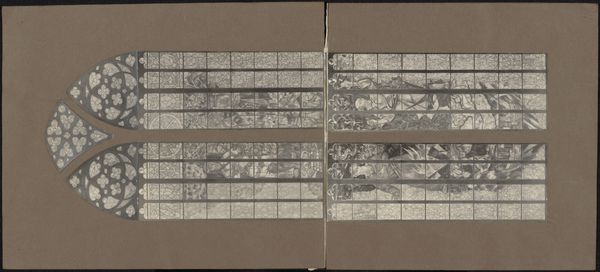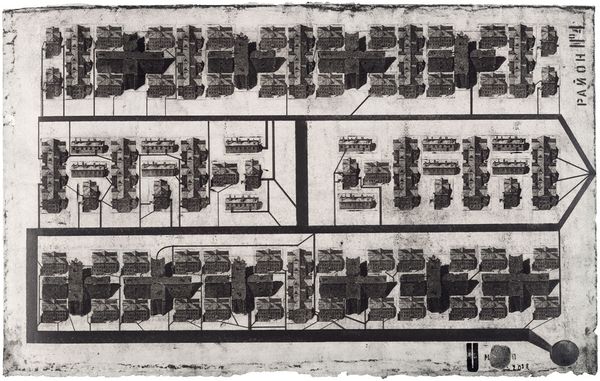
Dimensions: image: 402 x 656 mm
Copyright: © The Eduardo Paolozzi Foundation | CC-BY-NC-ND 4.0 DEED, Photo: Tate
Editor: This is Sir Eduardo Paolozzi’s "History of Nothing." It looks like a film strip filled with surreal drawings. What's striking is the sheer amount of imagery. How do you interpret this work? Curator: It’s a compelling critique of mass media and consumer culture. Paolozzi, as a Pop artist, often engaged with how images shape our understanding of reality, even create realities. The grid-like structure mimics film or comic strips, suggesting a narrative, but a narrative of "nothing." Consider how postwar society was flooded with images, promises, and anxieties. Editor: So the “nothing” is about the emptiness behind all those images? Curator: Precisely. And it's about questioning whose stories get told and how they are told. Paolozzi invites us to critically examine the role of media in constructing our perceptions. Editor: That gives me a lot to think about. It’s more than just a collection of images; it's a statement. Curator: Exactly. Art can reveal the power dynamics embedded in what we often overlook.
Comments
tate 6 months ago
⋮
http://www.tate.org.uk/art/artworks/paolozzi-history-of-nothing-p78339
Join the conversation
Join millions of artists and users on Artera today and experience the ultimate creative platform.
tate 6 months ago
⋮
History of Nothing is a print in soft ground aquatint on white paper with extensive overworking in black ink. The composition suggests sections of a film reel or a photographic contact sheet, with strips of images placed side by side in ten columns. Each strip comprises thirteen individual frames, totalling some 130 frames in the complete composition. In each of the frame an object, scene or pattern is crudely delineated in black. The subjects of the individual frames evoke for the most part technology and the industrial age, presenting details of cogs, wheels and other mechanisms. Some frames show faces or buildings. Occasionally two frames show the same subject matter: a bus moving through a tunnel, an aeroplane in flight, or the face of a mewing cat. Placed sequentially they resemble a short film sequence, and create a sense of movement between frames. However, individually most of the scenes suggest stasis. They emphasise a lack of movement and thus a lack of coherency between frames.

